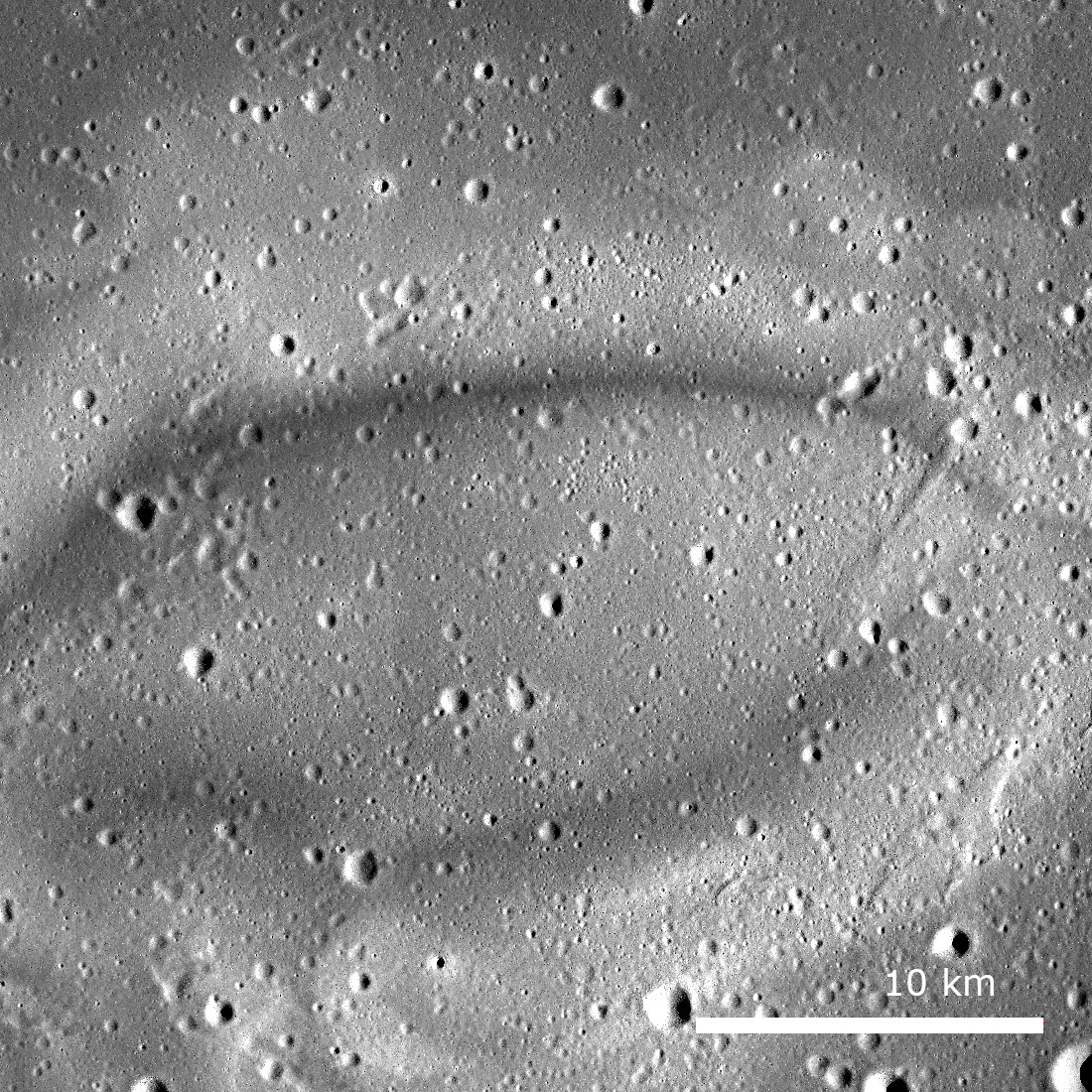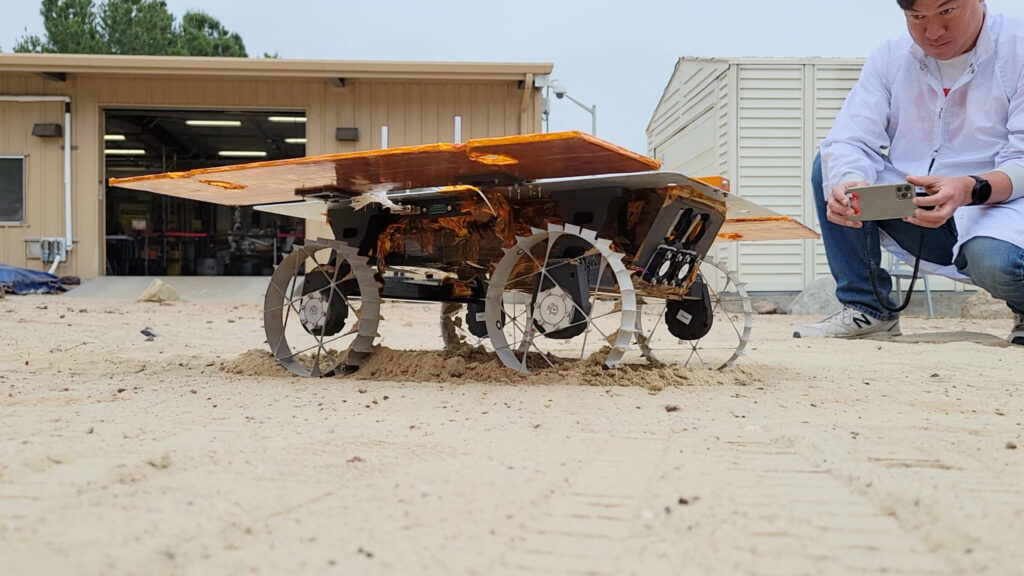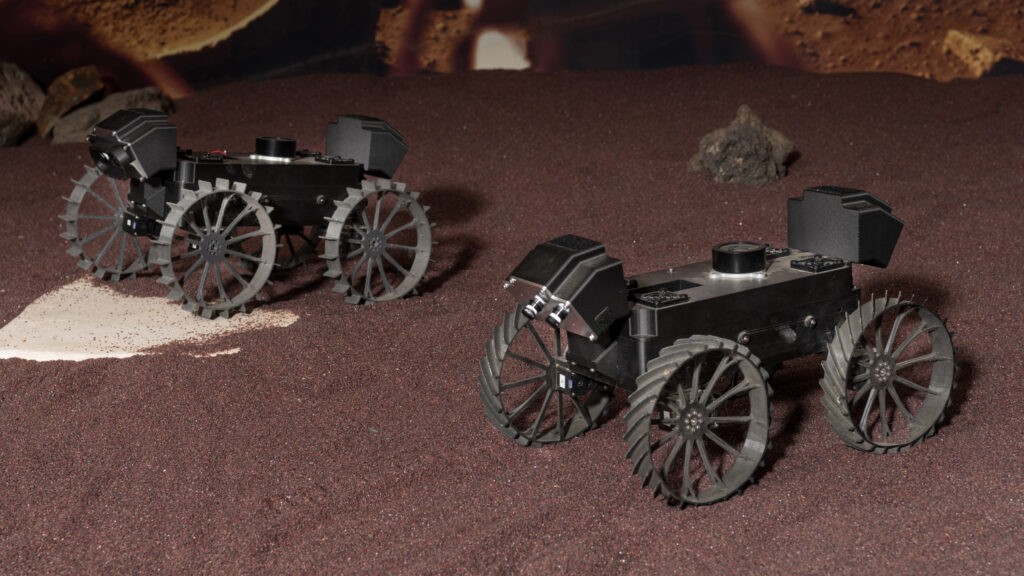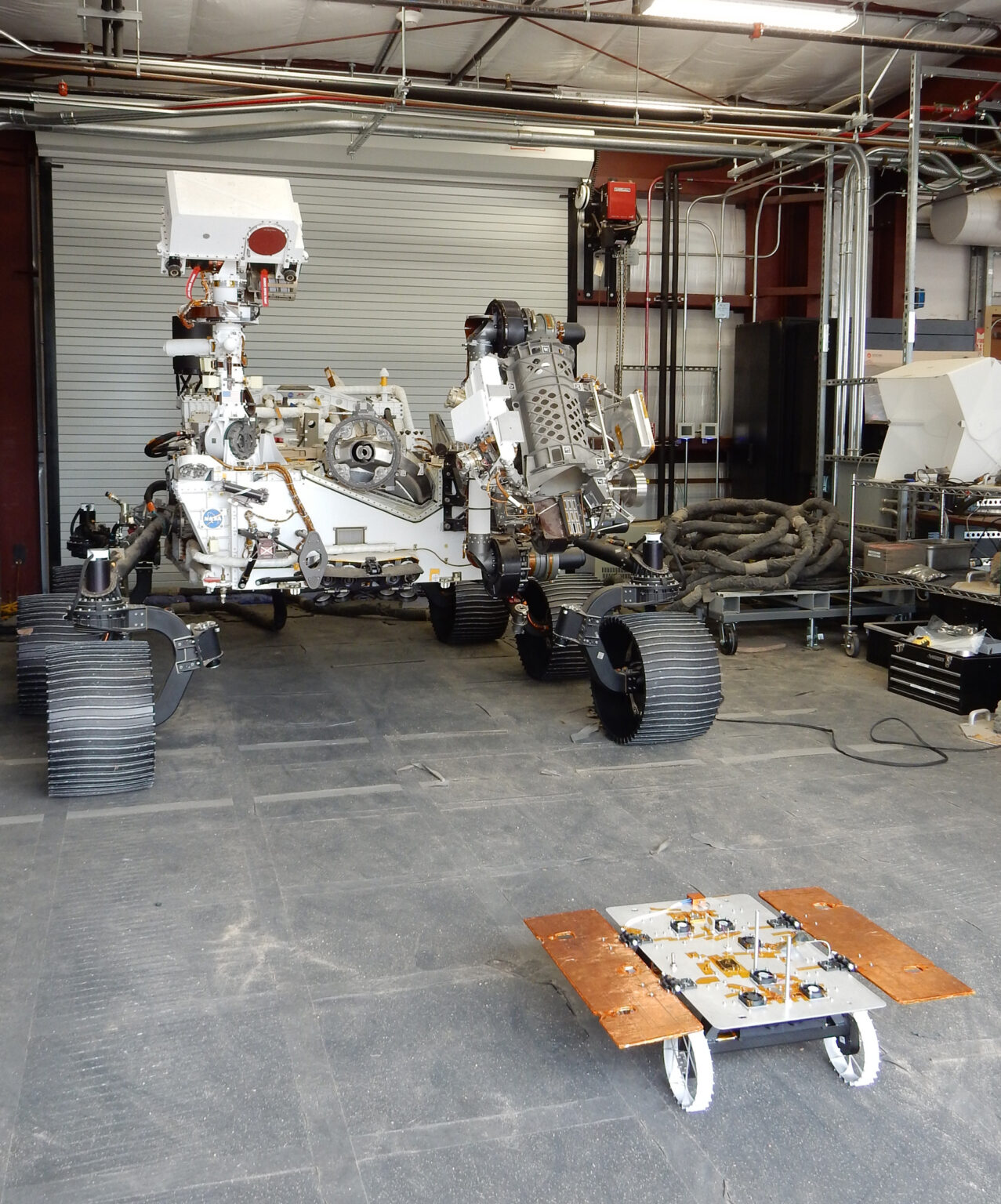As part of the CADRE (Cooperative Autonomous Distributed Robotic Exploration) project, NASA plans to send a group of three autonomous mini-rovers to the Moon. The purpose of the mission is to test how well they can interact with each other without the direct involvement of controllers from Earth.
Landing place of mini-rovers
CADRE rovers will be delivered to the Moon by a lander built by Intuitive Machines. This mission is being implemented as part of the CPLS initiative. Its goal is to attract commercial firms to the development of the Moon. At the moment, the launch is scheduled for 2024.

The landing site of the rovers should be the Reiner Gamma region, located in the Oceanus Procellarum on the visible side of the Moon. It is a characteristic light pattern consisting of a series of swirls and concentric ovals. The total size of the structure is about 70 km. The pattern is visible due to a larger albedo than that of the surrounding surface.

After landing, rovers the size of a hand suitcase will unfold solar panels, recharge, and then choose a “leader” who will distribute tasks between them. Next, each rover will decide for itself how to safely complete the task assigned to it.
Main tasks of the mini-rovers
During their mission, the CADRE rovers will have to conduct several experiments aimed at testing their capabilities. The first of them is to move in formation, adhering to a constant course and avoiding obstacles.

In the second experiment, the rovers will study a section of the lunar surface with an area of about 400 m2. Despite the fact that scientific research is not the main task of CADRE, each rover will be equipped with a georadar. Moving in formation, they will receive each other’s reflected radio signals, creating a three-dimensional image of the structure of the lunar interior at a depth of up to 10 meters. This will allow for evaluating the effectiveness of the rovers’ collaboration, as well as how well the team will be able to adapt if one of them stops working for some reason.
The final task of the project will be to assess the ability of the vehicles to maintain a temperature balance. On the one hand, the daytime temperature at the lunar equator is 120 ℃. On the other hand, the rover’s microprocessor must have sufficient power to maintain the operation of the “autonomous” software. And this creates additional heating.

To prevent overheating, the CADRE team proposed a creative solution: 30-minute wake-sleep cycles. Every half hour, the rovers will be turned off, cooled with radiators and charged batteries. After waking up, they will exchange information and again choose a leader based on who is better able to cope with the tasks.
Earlier we talked about how dirty underwear could become a problem for colonists on the Moon.
According to https://www.nasa.gov
Follow us on Twitter to get the most interesting space news in time
https://twitter.com/ust_magazine

